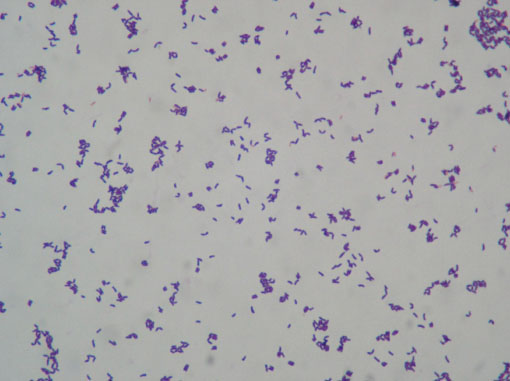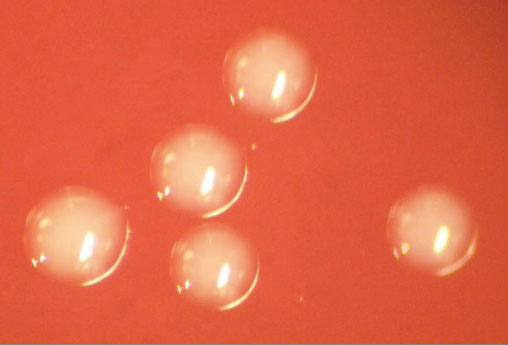Infect Chemother.
2012 Jun;44(3):205-209. 10.3947/ic.2012.44.3.205.
Development of Arthrobacter woluwensis Bacteremia in a Patient with Multiple Myeloma: A Case Report and Comprehensive Literature Review
- Affiliations
-
- 1Department of Internal Medicine, Yonsei University College of Medicine, Seoul, Korea. shhan74@yuhs.ac
- 2AIDS Research Institute, Yonsei University College of Medicine, Seoul, Korea.
- 3Department of Laboratory Medicine and Research Institute of Bacterial Resistance, Yonsei University College of Medicine, Seoul, Korea.
- KMID: 2170374
- DOI: http://doi.org/10.3947/ic.2012.44.3.205
Abstract
- Arthrobacter spp., which are coryneform gram-positive bacilli, are widely distributed in the environment, including soil. In humans, infection with Arthrobacter is recognized as an opportunistic infection. In particular, since the first reported case in 1996, human infection by A. woluwensis has been reported only four times. We report on a case of A. woluwensis bacteremia in a 76-year-old female patient with multiple myeloma. Performance of 16S rRNA gene sequence analyses resulted in identification of A. woluwensis. The patient was treated with teicoplanin, and the central venous port was removed. Since then, no growth has been observed on repeated blood cultures. The patient was discharged well after the fever subsided.
MeSH Terms
Figure
Reference
-
1. Funke G, Hutson RA, Bernard KA, Pfyffer GE, Wauters G, Collins MD. Isolation of Arthrobacter spp. from clinical specimens and description of Arthrobacter cumminsii sp. nov. and Arthrobacter woluwensis sp. nov. J Clin Microbiol. 1996. 34:2356–2363.
Article2. Bernasconi E, Valsangiacomo C, Peduzzi R, Carota A, Moccetti T, Funke G. Arthrobacter woluwensis subacute infective endocarditis: case report and review of the literature. Clin Infect Dis. 2004. 38:e27–e31.3. Shin KS, Hong SB, Son BR. A case of catheter-related bacteremia by Arthrobacter woluwensis. Korean J Lab Med. 2006. 26:103–106.4. Funke G, Pagano-Niederer M, Sjödén B, Falsen E. Characteristics of Arthrobacter cumminsii, the most frequently encountered Arthrobacter species in human clinical specimens. J Clin Microbiol. 1998. 36:1539–1543.
Article5. Hou XG, Kawamura Y, Sultana F, Shu S, Hirose K, Goto K, Ezaki T. Description of Arthrobacter creatinolyticus sp nov, isolated from human urine. Int J Syst Bacteriol. 1998. 48:423–429.
Article6. Wauters G, Charlier J, Janssens M, Delmée M. Identification of Arthrobacter oxydans, Arthrobacter luteolus sp. nov., and Arthrobacter albus sp. nov., isolated from human clinical specimens. J Clin Microbiol. 2000. 38:2412–2415.
Article7. Kim GY, Suh JT, Choi SK, Lee HJ. A case of bacteremia caused by Arthrobacter woluwensis. Korean J Clin Microbiol. 2007. 10:160–163.8. Chun J, Lee JH, Jung Y, Kim M, Kim S, Kim BK, Lim YW. EzTaxon: a web-based tool for the identification of prokaryotes based on 16S ribosomal RNA gene sequences. Int J Syst Evol Microbiol. 2007. 57:2259–2261.
Article9. Jorgensen JH, Patel JB, Hindler J, Schreckenberger PC, Citron DM, Turnidge JD, Cockerill FR, Walker RD, Fritsche TR, Welch DF, Funke G. Methods for antimicrobial dilution and disk susceptibility testing of infrequently isolated or fastidious bacteria; approved guideline. CLSI. 2006. 26:M45-A.10. Mages IS, Frodl R, Bernard KA, Funke G. Identities of Arthrobacter spp. and Arthrobacter-like bacteria encountered in human clinical specimens. J Clin Microbiol. 2008. 46:2980–2986.
Article11. Mermel LA, Farr BM, Sherertz RJ, Raad II, O'Grady N, Harris JS, Craven DE. Infectious Diseases Society of America. American College of Critical Care Medicine. Society for Healthcare Epidemiology of America. Guidelines for the management of intravascular catheter-related infections. Clin Infect Dis. 2001. 32:1249–1272.
Article12. Khamis A, Raoult D, LaScola B. Comparison between rpoB and 16S rRNA gene sequencing for molecular identification of 168 clinical isolates of Corynebacterium. J Clin Microbiol. 2005. 43:1934–1936.
Article
- Full Text Links
- Actions
-
Cited
- CITED
-
- Close
- Share
- Similar articles
-
- A Case of Bacteremia Caused by Arthrobacter woluwensis
- A Case of Catheter-Related Bacteremia by Arthrobacter woluwensis
- Multiple myeloma and chronic myelogenous leukemia: a case report with literature review
- Multiple Myeloma: Report of a Case Manifested as Facial Nerve Palsy
- Xanthoma of the liver in a patient with multiple myeloma associated with hyperlipidemia: A case report




